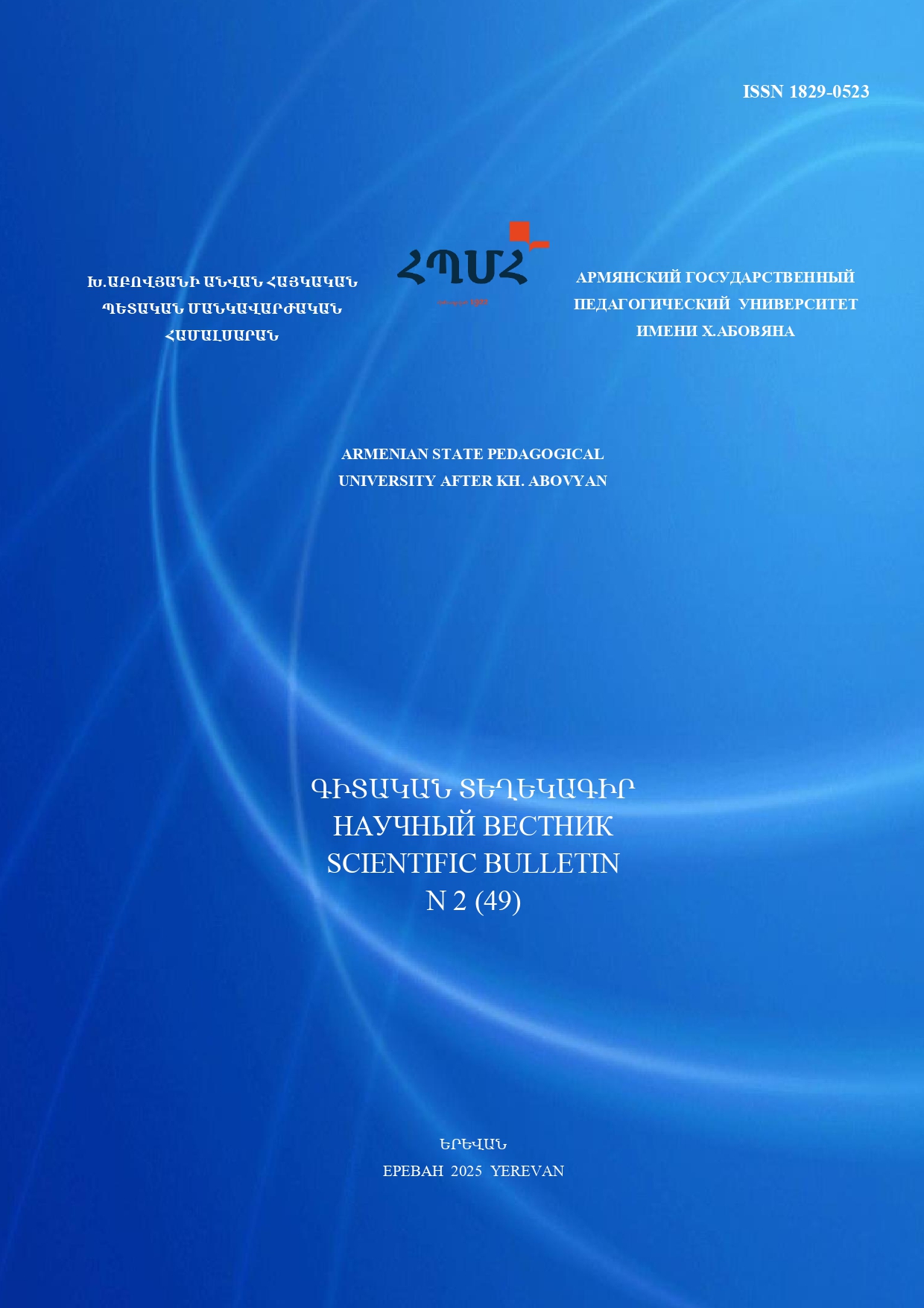ARMENIAN NAMES OF NUMBERS, OLDEST UNITS OF MEASUREMENT, ORIGIN OF THE SEXAGESIMAL SYSTEM
DOI:
https://doi.org/10.24234/scientific.v2i49.214Keywords:
me, number, sexagesimal system, bread, emmer, mathematics, Armenian Highlands, Armenian language, SumerianAbstract
Studies on the sexagesimal numeral system conducted so far have failed to provide convincing answers as to why this specific system was adopted for calculations. There remains a lack of clarity on why 60 was chosen as the system’s base having no obvious manifestations in nature.
This study proposes a compelling hypothesis regarding the origin of the base-60 system, a hypothesis that could only be unveiled through the lens of the Armenian living language and cultural context. It demonstrates that the sexagesimal system emerged from using emmer wheat (Triticum dicoccum), the first cultivated grain, as the foundational unit of calculation. It shows that the base-60 system was not created merely for everyday mathematical calculations for which base-10 would be more practical but rather served as a humanistic framework. Its purpose was to teach people how to engage in agriculture, cultivate grain, produce bread, and consume it encompassing nearly all the secrets of daily bread-making.
The hypothesis of an Armenian origin for the base-60 system is further supported by analysis of measurement units used during the first half of the 3rd millennium BCE. This analysis reveals fascinating details about ancient culture.
The study also examines the primary numeral terms and measurement units in Armenian, offering interpretations of their etymological logi
References
Aaboe, A. (1964). Episodes from the early history of mathematics.Random House. (Original work published 1964)
Acharian, H. (1926). Hayeren armatakan bararan [Armenian root dictionary] (Vols. 1–4). Yerevan Hamalsarani Hratarakchutyun. (In Armenian)
Alster, B. (1974). On the interpretation of the Sumerian myth “Inanna and Enki.” Zeitschrift für Assyriologie und Vorderasiatische Archäologie, 64(1), 20–34. https://doi.org/10.1515/zava.1974.64.1.20
Cantor, M. B. (1880–1908). Vorlesungen über Geschichte der Mathematik (Vols. 1–4). B.G. Teubner. (Original work published 1880–1908)
Castellino, G. R. (1969). Il concetto sumerico di 'me.' Oriens Antiquus, 8(2), 87–89, 91–97, 99–103, 105–113. https://doi.org/10.2307/43073338
Cavigneaux, A. (1978). L’essence divine. Journal of Cuneiform Studies, 30, 177–186. https://doi.org/10.2307/1359916
Emelyanov, V. V. (2009). Shumerskii kalendarnyi ritual (Kategoriia ME i vesennie prazdniki) [Sumerian calendar ritual (Category ME and spring festivals)]. Peterburgskoe Vostokovedenie. (Original work published in Russian). ISBN: 978-5-85803-409-5
Gyllenbok, J. (2018). Encyclopaedia of historical metrology, weights, and measures (Vols. 1–3). Birkhäuser. https://doi.org/10.1007/978-3-319-57598-8
Ifrah, G. (2000). The universal history of numbers: From prehistory to the invention of the computer (D. Bellos, E. F. Harding, S. Wood, & I. Monk, Trans.). John Wiley & Sons. (Original work published as Histoire universelle des chiffres,1994)
Jacobsen, T. (1962). Toward the image of Tammuz. History of Religions, 1(2), 189–213.
Jahukyan, G. (2010). Hayeren stugabanakan bararan [Armenian etymological dictionary]. Institute of Linguistics NAS RA. (In Armenian)
Klein, J. (1997). The Sumerian me as a concrete object. Altorientalische Forschungen, 24(2), 211–230. https://doi.org/10.1524/aofo.1997.24.2.211
Kramer, S. N. (1963). The Sumerians: Their history, culture, and character. University of Chicago Press.
Malkhasyants, S. (1944–1945). Hayeren batsatrakan bararan [Explanatory dictionary of Armenian] (Vols. 1–4). Armenian SSR Academy of Sciences Press. (In Armenian)
Manandyan, H. (1930). Kshirrery yev chapary hnaguyn hayeren aghbyurnerum [Weights and measures in ancient Armenian sources]. Melkonyan Fond. (In Armenian)
Neugebauer, O. (1969). The exact sciences in antiquity (2nd ed.). Dover Publications. (Original work published 1957)
Open Richly Annotated Cuneiform Corpus (ORACC). (2024, September 28). Oracc Sign List (Version 1.0). The Pennsylvania Sumerian Dictionary Project. Retrieved June 10, 2025, from https://oracc.museum.upenn.edu/osl/signlist/
Robson, E. (2008). Mathematics in ancient Iraq: A social history. Princeton University Press.
Sukiasyan, A. (1967). Hayots lezvi himanisheri bararan [Dictionary of synonyms of the Armenian language]. Armenian SSR Academy of Sciences Press. (In Armenian)
Waerden, B. L. van der. (1963). Science awakening (Vol. 1: Egyptian, Babylonian and Greek mathematics; A. Dresden, Trans.). John Wiley & Sons. (Original Dutch edition published 1950 as Ontwakende wetenschap)
Downloads
Published
Issue
Section
License
Copyright (c) 2025 GAGIK POGHOSYAN

This work is licensed under a Creative Commons Attribution-NonCommercial 4.0 International License.




